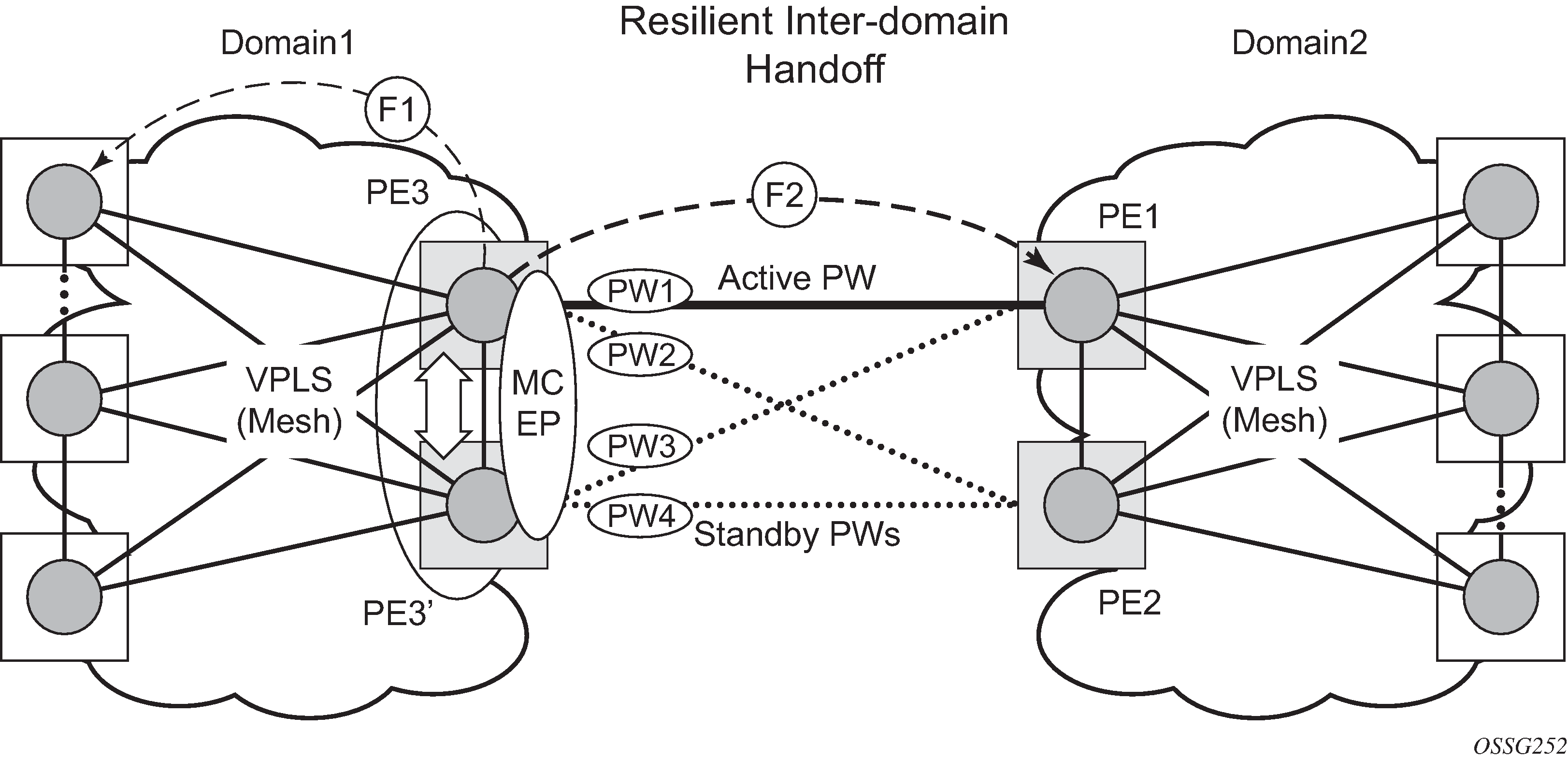In an MC-EP scenario, failure of a pseudowire or gateway PE determines activation of one of the next best pseudowires in the MC-EP group. This section describes the MAC flush procedures that can be applied to ensure blackhole avoidance.
Figure: MAC flush in the MC-EP solution shows a pair of PE gateways (PE3 and PE3) running MC-EP toward PE1 and PE2 where F1 and F2 are used to indicate the possible direction of the MAC flush, signaled using T-LDP MAC withdraw message. PE1 and PE2 can only use regular VPLS pseudowires and do not have to use an MC-EP or a regular pseudowire endpoint.

Regular MAC flush behavior applies for the LDP MAC withdraw sent over the T-LDP sessions associated with the active pseudowire in the MC-EP; for example, PE3 to PE1. That includes any Topology Change Notification (TCN) events or failures associated with SAPs or pseudowires not associated with the MC-EP.
The following MAC flush behaviors apply to changes in the MC-EP pseudowire selection:
If the local PW2 becomes active on PE3:
On PE3, the MACs mapped to PW1 are moved to PW2.
A T-LDP flush-all-but-mine message is sent toward PE2 in the F2 direction and is propagated by PE2 in the local VPLS mesh.
No MAC flush is sent in the F1 direction from PE3.
If one of the pseudowires on the pair PE3 becomes active; for example, PW4:
On PE3, the MACs mapped to PW1 are flushed, the same as for a regular endpoint.
PE3 must be configured with send-flush-on-failure to send a T-LDP flush-all-from-me message toward VPLS mesh in the F1 direction.
PE3 sends a T-LDP flush-all-but-mine message toward PE2 in the F2 direction, which is propagated by PE2 in the local VPLS mesh. When MC-EP is in passive mode and the first spoke becomes active, a no MAC flush-all-but-mine message is generated.